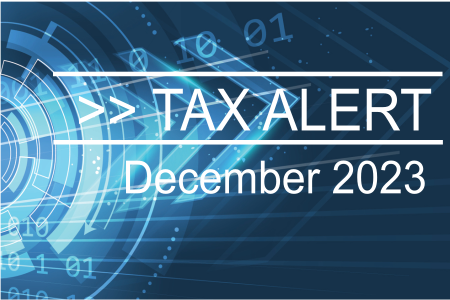What is fringe benefits tax?

Fringe benefits tax (FBT) is a tax paid by employers on certain benefits provided to their employees, or to their employees’ family or other associates.
FBT is separate to income tax. It’s calculated on the taxable value of the fringe benefit.
As an employer, you must self-assess your FBT liability for the FBT year (1 April to 31 March). If you have an FBT liability, you must lodge an FBT return and pay the FBT you owe.
What is a fringe benefit?
A fringe benefit is like a payment to an employee, but in a different form to salary or wages.
There are different types of fringe benefits. Examples include:
- allowing an employee to use a work car for private purposes
- car parking
- paying an employee’s gym membership
- providing entertainment by way of free tickets to concerts
- reimbursing an expense incurred by an employee, such as school fees
- giving an employee a discounted loan
- giving benefits under a salary sacrifice arrangement with an employee.
The following are not fringe benefits:
- salary and wages
- employer contributions to complying super funds
- shares or rights provided under approved employee share acquisition schemes
- employment termination payments (including, for example, the gift or sale at a discount of a company car to an employee on termination)
- payments deemed to be dividends under Division 7A
- benefits provided to volunteers and contractors
- exempt benefits, such as certain benefits provided by religious institutions to their religious practitioners.
Who receives fringe benefits?
FBT applies to fringe benefits provided to your employees, or to your employees’ families or other associates.
For FBT purposes, an employee includes a:
- current, future or past employee
- director of a company
- beneficiary of a trust who works in the business.
If you’re a sole trader or a partner in a partnership, you are not an employee. Benefits you provide to yourself are not subject to FBT.
Your clients are not employees. Benefits you provide to clients, such as entertainment, are not subject to FBT.
Who pays FBT?
The employer pays FBT.
This is the case even if the benefit is provided by a third party under an arrangement with the employer.
How much FBT do you pay?
To work out how much FBT to pay, you ‘gross-up’ the taxable value of the benefits you’ve provided. This is equivalent to the gross income your employees would have to earn, at the highest marginal tax rate (including the Medicare levy), to buy the benefits themselves.
The FBT you pay is 47% of this ‘grossed-up’ value of the fringe benefits.
Example: FBT on a gym membership
Jenni runs a small consulting firm. She provides her employee, Anton, with a gym membership that costs $1,100 (including $100 GST).
This is a fringe benefit. Jenni works out the FBT as follows:
Taxable value of the benefit ($1,100)
× the gross-up rate (for a GST-inclusive fringe benefit the rate is 2.0802)
× the FBT rate (47%)
= FBT of $1,075.46.
Jenni must prepare and lodge an annual FBT return, and pay her FBT liability.
She may also need to calculate and report Anton’s reportable fringe benefits amount in his end-of-year payment information.
As the gym membership is subject to FBT, Jenni can claim:
- an income tax deduction and GST credit for the cost of the gym membership
- an income tax deduction for the FBT paid.
Can you claim deductions and GST credits?
As an employer, you can claim:
- an income tax deduction and GST credits for the cost of providing fringe benefits
- if you can claim GST credits, you claim the GST-exclusive amount as an income tax deduction
- if you can’t claim GST credits, you claim the full amount as an income tax deduction
- an income tax deduction for the FBT you are required to pay.
What do you need to do?
As an employer, you need to:
- Identify the types of fringe benefits you provide.
- Check for FBT concessions and ways you can reduce FBT. Work out the taxable value of fringe benefits you provide.
- Some benefits are exempt from FBT, such as work-related items.
- You can reduce your FBT liability by using alternatives to fringe benefits or providing benefits that are eligible for a concession.
- If you’re a not-for-profit employer, you may be eligible for an exemption or rebate for not-for-profit organisations.
- Calculate your FBT liability.
- Keep records, including employee declarations where needed.
- Lodge an FBT return and pay the FBT you owe.
- Report each employee’s fringe benefits in their end-of-year payment information, if required.
FBT – a guide for employers
Fringe benefits tax – a guide for employers is an additional resource to help you meet your FBT obligations as an employer. It explains:
- FBT and your responsibilities as an employer
- how to identify and value each type of benefit, and what concessions are available
- the meaning of terms used throughout the guide.
Talk to us if you’d like more information about FBT.
Source: ato.gov.au Jan 2023
Reproduced with the permission of the Australian Tax Office. This article was originally published on https://www.ato.gov.au/Business/Fringe-benefits-tax/How-fringe-benefits-tax-works/.
Important:
This provides general information and hasn’t taken your circumstances into account. It’s important to consider your particular circumstances before deciding what’s right for you. Although the information is from sources considered reliable, we do not guarantee that it is accurate or complete. You should not rely upon it and should seek qualified advice before making any investment decision. Except where liability under any statute cannot be excluded, we do not accept any liability (whether under contract, tort or otherwise) for any resulting loss or damage of the reader or any other person.
Any information provided by the author detailed above is separate and external to our business and our Licensee. Neither our business nor our Licensee takes any responsibility for any action or any service provided by the author. Any links have been provided with permission for information purposes only and will take you to external websites, which are not connected to our company in any way. Note: Our company does not endorse and is not responsible for the accuracy of the contents/information contained within the linked site(s) accessible from this page.
Did you enjoy this article?
Click below to share it
More News Articles

What the 2025 Federal Budget Means for you
Treasurer Jim Chalmers’ fourth federal budget
was just announced

Retirement Planning: It’s Not all About the Money
Retirement is often a massive life change for the majority of people who experience it

FBT – How Fringe Benefits Tax Works
FBT is separate to income tax. It’s calculated on the taxable value of the fringe benefit

Tax Alert December 2023
The ATO is getting back to business with it’s lenient approach during the pandemic over, it’s focus now is returning to traditional debt collection

How a Super Recontribution Strategy Could Improve Your Tax Position
The main reason for implementing a recontribution strategy is to reduce the taxable component of your super and increase the tax-free component

Rental investor? How to Get Your Tax Return Right
Extra care is needed when lodging returns with rentals
Connect Through our Socials
While you may have come to us from a variety of sources, the time has never been better to join us.
Connect through out socials to keep up to date with our latest news and get some tips.




